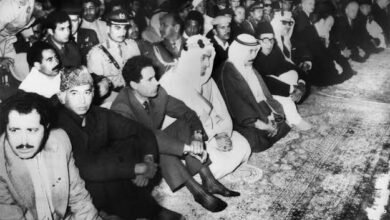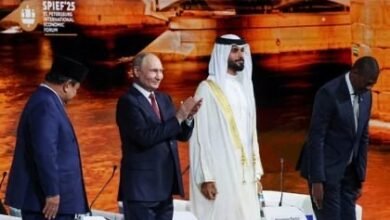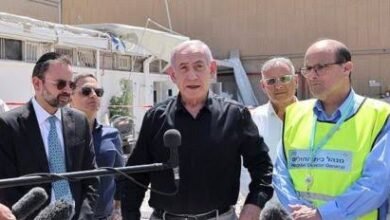Dark Shadows Over the Valley of Light: Who Gains from Bloodshed in Kashmir?
Voices from the Valley: Grief, Guilt, and the Demand for Peace

In the idyllic landscape of Pahalgam, nestled in the lap of the Himalayas and known for its breathtaking beauty and peace, a sinister shadow was cast this week when a horrifying attack targeted innocent tourists in broad daylight. The place, once synonymous with serenity and Sufi culture, has once again been pushed into the harsh spotlight of violence and chaos. But the question burning in every mind is: Who benefits from spilling innocent blood in a land that thrives on peace and tourism?
A Blatant Contradiction to Kashmiriyat
Tourism is the lifeblood of Kashmir. From local artisans to horse riders, from hoteliers to houseboat owners, every family in the valley relies on the inflow of tourists. Then why, and more importantly, who, would orchestrate such an attack—especially if they claim to stand for “Kashmiriyat,” the ethos of peace, coexistence, and spiritual brotherhood?
This attack doesn’t represent the soul of Kashmir; it tarnishes it. It defies logic unless viewed through a larger, murkier lens—one painted with political motives, global diplomacy, and strategic distractions.
A Political Coincidence or a Calculated Diversion?
The timing of the attack raises more questions than answers. Prime Minister Modi was being hosted with full honors by the Saudi government in Jeddah, receiving a ceremonial gun salute. Simultaneously, the Vice President of the United States was on an official visit to India. And amid this high-stakes diplomatic theater, bullets rang out in Pahalgam.
Is this a mere coincidence? Or a deeply calculated message to disrupt India’s image globally, to paint Kashmir once again as a terror hotspot?
It eerily mirrors the Pulwama attack on CRPF forces—an incident later revealed by former Governor Satya Pal Malik as a result of internal failure, hinting at a possible political design to stir nationalistic sentiment just before the elections. Are we witnessing a repeat of history?
Who Stands to Gain?
The Valley is gripped not by fear but by protest. People are on the streets—not to call for revenge but to demand truth. They refuse to accept the mainstream media’s label of a “terror attack.” They believe this was orchestrated to serve someone else’s agenda—someone who benefits when Kashmir burns.
While world leaders like Vladimir Putin and Donald Trump have condemned the attack, what solace does condemnation bring to families who lost their loved ones? What justice awaits the tourist who came seeking peace and found death?
The Elected Chief Minister, or a Puppet?
Kashmir’s newly “elected” Chief Minister Omar Abdullah assumes office under a cloud. He lost the parliamentary elections, yet was mysteriously catapulted to power. People believe this elevation didn’t come from votes—it came from New Delhi.
But even that seems symbolic. Omar now resembles a man gifted a Lamborghini with all four tires punctured—no real power, no authority. The reins remain in the hands of Lieutenant Governor Manoj Sinha, the true administrator of the Union Territory.
Kashmir: A Conflict Zone, A Pawn Between Powers
Historically, Kashmir has suffered under the tug-of-war between India, Pakistan, and China. Yet it’s the common Kashmiri who pays the price, who gets labeled, silenced, and sacrificed for others’ ambitions.
From “unknown gunmen” to masked shooters, the stories never change—only the victims do. And every time, the same narrative is pushed: religion, radicalism, and terrorism. But those living in Kashmir know the truth isn’t that simple. The truth lies buried under propaganda and blood.
Voices from the Valley: Grief, Guilt, and the Demand for Peace
The entire Valley is mourning. Not just for the victims, but for the very soul of Kashmir that’s being so ruthlessly misrepresented. Locals cry openly—not out of fear, but out of helplessness. They are tired of being labeled terrorists when their legacy is Sufism, poetry, and hospitality.
Even the horseman who tried to stop the attackers—gunned down by his own partner—symbolises the tragic irony of Kashmir’s story: those trying to protect peace fall first.
A Dangerous Distraction from Domestic Realities
Some believe the attack was not just about Kashmir, but about shifting focus. Just days ago, the Indian government passed the controversial Waqf bill, perceived by many as an attack on the Muslim minority. Could this incident in Pahalgam be a well-planned distraction to divert national attention from growing unrest?
India’s internal fault lines—particularly Hindu-Muslim tensions—have been manipulated repeatedly by those in power. From the abrogation of Article 370 to frequent communal flashpoints, the current administration has often leaned on divisive politics to retain control.
And when reports suggest that gunmen were selectively asking tourists about their religion before shooting, it points disturbingly toward a staged act—possibly by an agency or group with a motive far beyond just creating fear.
Conclusion: Time for Truth, Not Tags
It’s high time the world looks beyond the headlines and into the **hearts of the people of Kashmir.** They are not asking for sympathy. They are asking for the truth. They are tired of being used—by governments, by politics, by media.
Let the world come together not to condemn—but to investigate. Let the real culprits be exposed—not just in Kashmir, but in Delhi, Islamabad, or wherever the strings of this tragic puppet show are being pulled.
Kashmir needs peace, not politics. It needs justice, not judgment. And above all, it needs the world to care enough to uncover the truth.



